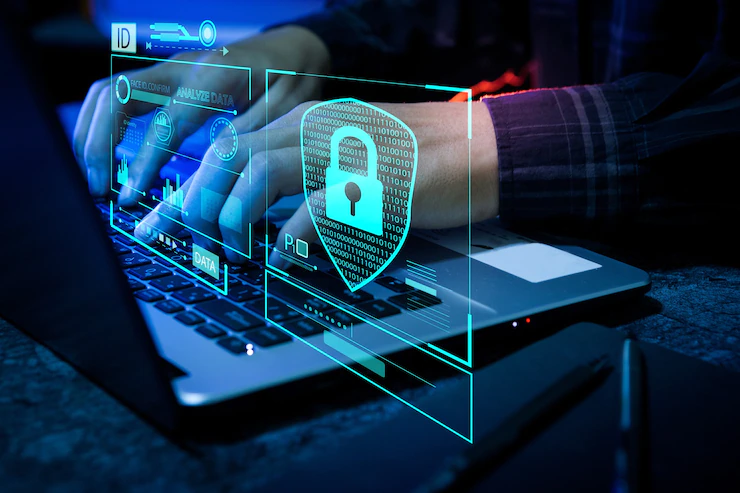Why Companies Are Relying on HR Agencies for Executive Search
Barsha Bhattacharya, 2 days ago

Barsha Bhattacharya, 3 days ago

Barsha Bhattacharya, 3 days ago

Barsha Bhattacharya, 1 week ago


The development of cloud software infrastructures has simplified things, but it has also rendered hosted apps and data accessible to prospective hackers to the same level.
Because they do not keep up with the ever-changing technology, traditional encryption mechanisms are no longer enough for protecting such cloud computing resources. It increases the likelihood of potential network data assaults.
Zero Trust security is a method that safeguards employee and employer communications. As businesses have gotten more transnational, it is critical to use a zero-trust strategy.
According to Statista, one-third of enterprises have already implemented the Zero Trust Model to achieve complete network security as of January 2022.
To keep their private data safe, every digital firm must implement a zero-trust operation. Aside from security, it simplifies the multi-cloud network and allows it to be controlled regardless of location.
However, some organizations struggle with how to implement Zero Trust Security, so let’s start with a basic understanding.

Zero trust is an important cybersecurity paradigm that relies on the concept that no user should have default permission to the company’s network. Companies that employ this approach can create zero-trust-based systems on a user’s request for identity, authorization, authentication, and security posture.
This security strategy offers organizations ultimate zero trust solutions like enhanced user experience, a more simple network landscape, and greater defense against cyberthreats. Furthermore, the rising threat of unfiltered user access to firms’ networks from many devices pushes them to adopt the zero-trust paradigm.
Related Resource: How To Become A Cybersecurity Analyst [Full Guide 2021]

To identify devices or users, the zero trust model relies on a mix of different techniques, such as endpoint security, device identification, user verification, allowed access, and strong cloud technology.
Zero trust also needs careful thinking to fully implement the framework throughout the company. Before connecting to resources, these concerns include asset verification, email security, data encryption, and endpoints.
The zero-trust approach imposes important corporate characteristics such as constant monitoring and certification of customers’ access points. It also requires users to adhere to the critical policy to mitigate risks and meet security standards.

Zero trust security system operates on multiple fronts and provides a comprehensive security plan to cover all the vulnerable access points.
It is a state-of-the-art cyber security model that offers protection at multiple levels to protect businesses from cybercriminals. It is a complete solution for cloud-based networks and allows users to work remotely.
The anonymity provided by a zero-trust security model improves the growth of an organization without risking the resources required for international communication and business ventures. Here are a few reasons to use a zero-trust security system to protect your business:
To identify personnel, most businesses utilize a Single Sign-On verification technique. A hacker might simply disrupt this verification procedure. To identify an employee, Zero Trust uses machine learning and artificial intelligence.
As personnel is validated, the machine learning program detects their behavior. If an employee deviates from his or her typical behavior, the zero trust security model prevents the user from accessing the company’s resources.
You don’t need to pay IT personnel to monitor your security system. Because it is an advanced security system, zero trust lowers the requirement for additional IT workers.
Through an automated mechanism, it imposes privileged access security rules on remote employees. It means that an administrator is provided with specialized security clearance to confidential information.
It prevents lateral movement by preventing the intruder from mimicking another user. It hides the entry point of a company’s website and stops the hacker at the first step of identification. The attacker cannot access a worker’s user ID. A zero-trust security system uses a mix of machine learning and artificial intelligence to identify people.
As it validates workers or anonymous users attempting to access a company’s resources, the zero trust model evolves. Because of obsolete security systems, many organizations are exposed to hackers and cyber security threats. Because it is an automated system, zero-trust security protects your company from all forms of cyber threats.
Many personnel work in different time zones and require access control at various times of the day. Zero trust security assists businesses in striking the correct balance between remote access and diverse time zones.
Because it is a monitored security architecture, it will prevent services and applications from connecting if adequate identity information and asset validation are not performed. It assures that individuals will adhere to the guidelines for gaining access to necessary resources.
This approach avoids organizational risks by thoroughly inspecting critical assets and networks. It will be simpler to eliminate software-related dangers if the baseline is established through early risk identification.
Zero trust security improves remote employees’ overall security. Remote employees connect to public WiFi or unrecognized networks from various locations.
Traditional security techniques cannot control all of these networks or unidentified internet access alternatives. As a result, the Zero Trust security solution safeguards enterprises that provide remote and hybrid work environments.
The Zero Trust security mechanism is not going away as it provides a complete security plan in a world where firms operate on regional and international levels.
It prevents lateral movement, secures the company’s resources from unauthorized network access, and distributes information only to those who need to know. It helps organizations and individuals in protecting their infrastructure against internal and external threats.
Read Also:
Arnab Dey is a passionate blogger who loves to write on different niches like technologies, dating, finance, fashion, travel, and much more.